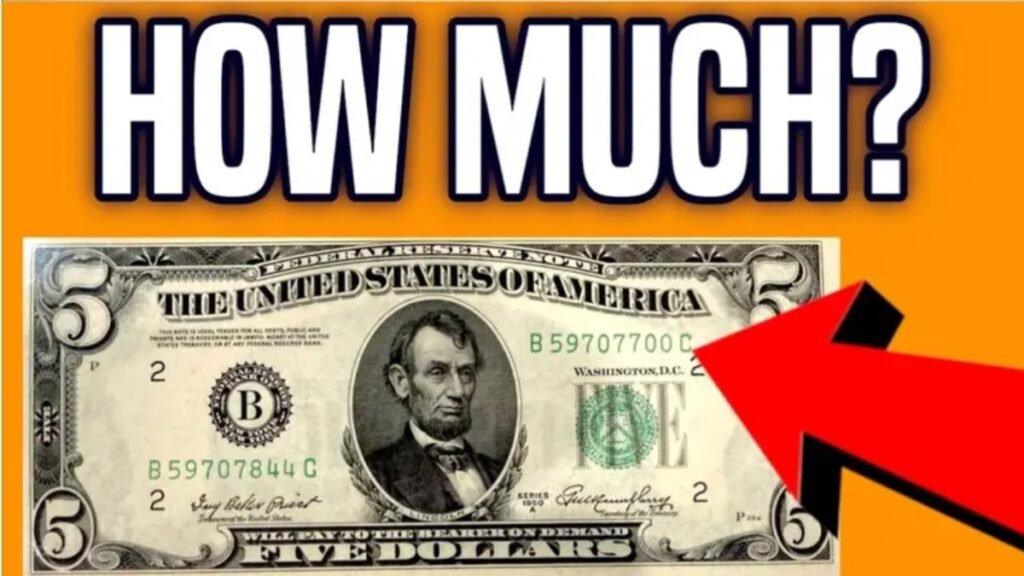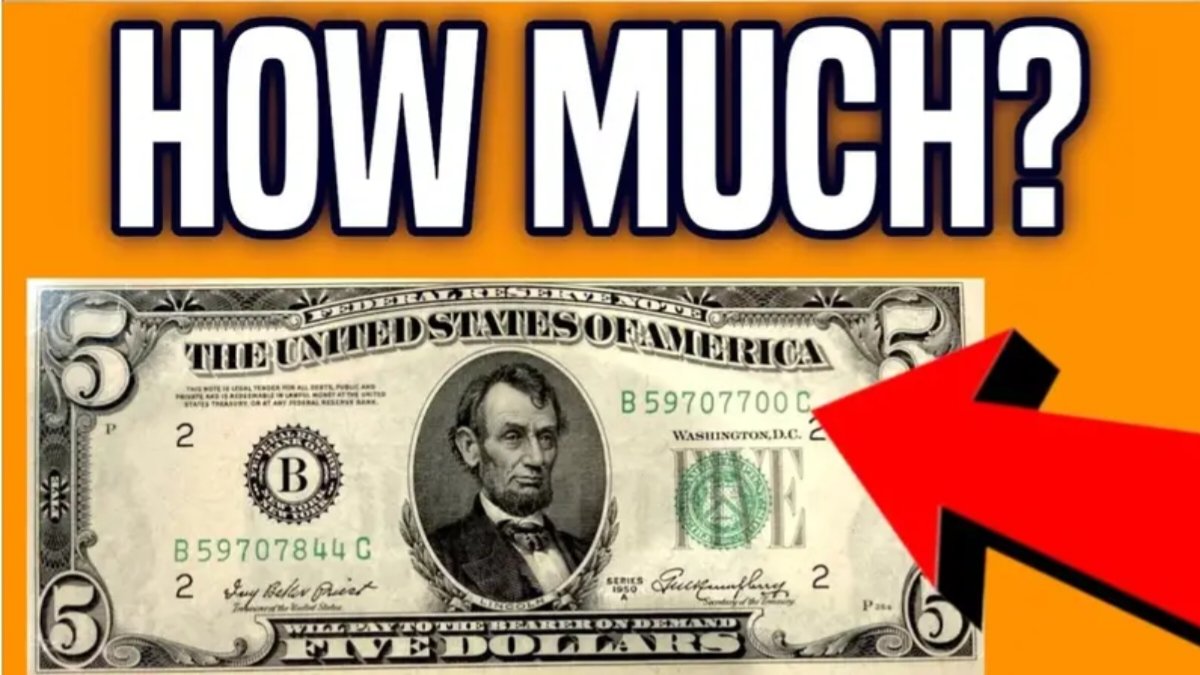Check the Money in Your Pocket : Have you ever wondered if that old $5 bill lying around your wallet could be worth hundreds—or even thousands—of dollars? Well, you might want to take a closer look. Collectors across the country are buzzing about a rare 1995 $5 bill printing error that features an upside-down seal, and it’s turning ordinary pocket cash into a collector’s dream. This surprising mistake from the U.S. Bureau of Engraving and Printing has made these bills some of the most sought-after pieces of modern currency.
What Makes the 1995 $5 Bill So Special?
In 1995, a small batch of $5 bills was printed with a major flaw—the Department of the Treasury seal, usually located to the right of Abraham Lincoln’s portrait, was printed upside down. While most bills from that era were destroyed or corrected before circulation, a few managed to escape the quality check process and ended up in public hands.
Collectors call this kind of mistake an “inverted seal error”, and depending on the condition and rarity, these notes can sell for anywhere between $500 to over $3,000 on collector marketplaces and auction sites.

How to Identify a 1995 $5 Bill With an Upside-Down Seal
Here’s how you can quickly check if your $5 bill is one of the rare ones:
- Step 1: Look at the Right Side of the Bill – Find the green Treasury seal next to Lincoln’s portrait. On a normal bill, the seal should be upright and perfectly aligned.
- Step 2: Check the Seal Orientation – If the seal is printed upside down, you might have a rare error note. The serial numbers and other features should still be in the correct position—only the seal should appear inverted.
- Step 3: Confirm the Series Year – The bill should read “Series 1995” on the lower right near the portrait. Other years don’t carry the same value for this specific error.
- Step 4: Check for Authenticity – Make sure the bill hasn’t been altered or printed with fake ink. Experts recommend using a magnifier or UV light to ensure it’s genuine.
ALSO READ : $1,702 Stimulus Payment for US Citizen – November 2025 Full Payment Schedule Released
How Much Could Your Bill Be Worth?
The value of a 1995 $5 bill with an upside-down seal depends on several factors, including:
- Condition (Grade) – Crisp, uncirculated notes are worth the most.
- Serial Number Rarity – Notes with unique serial numbers (like repeating or low digits) add more value.
- Market Demand – Depending on collector trends, prices can fluctuate.
As of recent collector auctions, genuine 1995 $5 bills with clear inverted seals have fetched anywhere from $700 to $2,500, depending on the note’s condition and demand.
Where to Sell or Verify Your Rare Bill
If you believe you’ve found one of these rare $5 bills, here’s what to do next:
- Get it Authenticated – Contact a professional currency grader such as PMG (Paper Money Guaranty) or PCGS Currency.
- Check Auction Sites – Websites like eBay, Heritage Auctions, and Stack’s Bowers often feature listings for rare currency errors.
- Consult a Local Coin or Currency Dealer – A trusted numismatic expert can evaluate your note and provide an estimated market value.
Why These Errors Are So Valuable
Printing errors like the 1995 upside-down seal happen only once in a while, and when they do, they create massive excitement among collectors. Because paper money is tightly regulated and inspected, such errors rarely reach public circulation. That scarcity—combined with the clear visual flaw—makes them incredibly desirable and collectible.
Final Thoughts
Before you spend that old $5 bill, take one last look—it might not be worth just five dollars after all. The 1995 $5 bill with an upside-down Treasury seal is one of those hidden gems in American currency history that turns a simple mistake into a big payday.
So, the next time you’re sorting through your cash, remember: sometimes, a small printing error could mean you’re holding a $1,000 surprise in your pocket.
FAQs Related To Above Topic
Q1. What year’s $5 bill has the upside-down seal error?
The error is primarily found on Series 1995 $5 bills.
Q2. How can I confirm if my bill is real?
Have it authenticated by professional grading services like PMG or PCGS Currency.
Q3. Can other years have similar printing errors?
Yes, but the 1995 $5 bill is one of the most recognized and valuable examples.
Q4. Where can I sell it?
Online marketplaces, coin shows, or auction houses that specialize in rare currency.
Q5. What’s the highest known sale price?
Some pristine, authenticated examples have sold for over $3,000.

